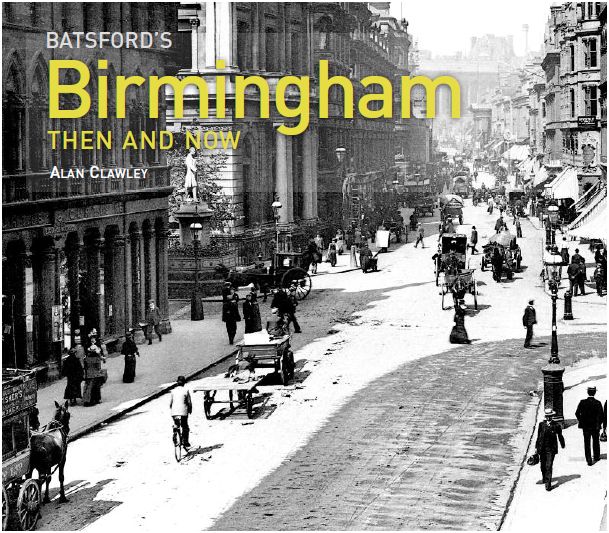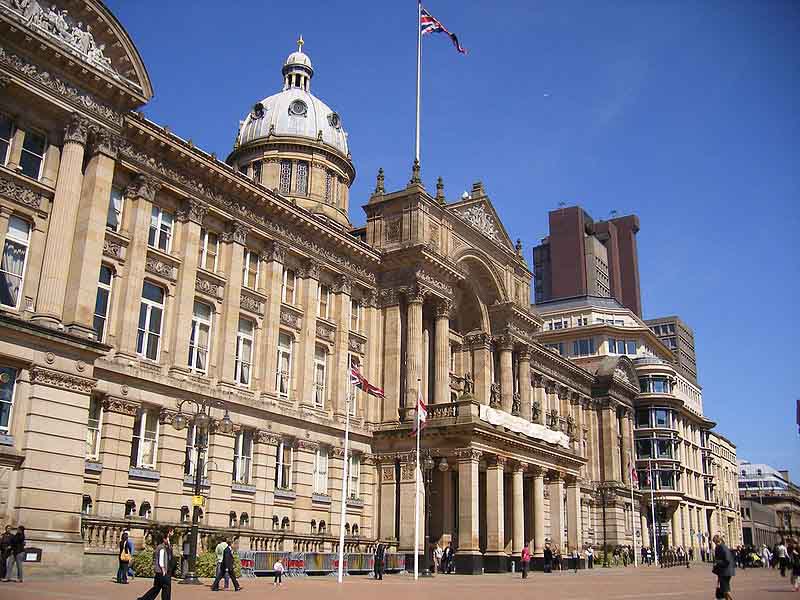Andy Goff has finally received his copy of Birmingham: Then and Now. He likes it a lot.
When I was a young chap, in the late ‘60s, my friend Peter Carnell and I used to cop a rattler into Birmingham and wander round fairly aimlessly. We had sufficient money for a cup of coffee and that was about it. Sometimes, to amuse ourselves, we would ‘follow a china man’ on the basis that they could be one of the Fifth Columnists that used to worry my mother. This was around the time of the Cultural Revolution in China, so we had every reason to be suspicious. Inevitably, our chosen target would end up in a Chinese restaurant and we would drift off in search of some other harmless amusement.
This random drifting around Birmingham did, however, make me take note of the city and its buildings.
When I look back, I visualise a city where the canals were filled with rubbish, a general air of shabbiness and every building was naturally black.
Like most cities in the world, Birmingham has changed dramatically over the years. The bomb sites have been built on, the canals cleaned up, the black buildings that survived redevelopment now revealed as being elegant redbrick or terracotta.
Yes, much has changed and it’s harder to recall the city of my youth. So it was with delight I received my copy of Alan Clawley’s book Birmingham – Then and Now.
Reading through this is a journey through time.
Alan has created a gem of a record by taking pictures from old Brum and matching them with pictures of the same sites in much more recent times.
Thus we have a photo of a glorious King Edward’s grammar school, just off New Street , that was demolished in 1936 matched with a picture of the same location now; the Odeon cinema. This is followed by a picture of what was the Midland Bank on New Street – where I purchased my Belgian francs for a first trip abroad in 1962 and marked in my passport because of exchange control laws – next to a picture of the same building which survived, now a Waterstone’s book shop – but for how long?
Some of the views – well, a few – have hardly changed: The Council House in Victoria Square is largely as it was – but cleaner. The Town Hall where Mendelssohn conducted the first performance of his oratorio Elijah and where I saw Led Zeppelin, Ralph McTell, Rory Gallagher and Pink Floyd, among others, looks more magnificent now that it did when first built. The Great Western Arcade looks pretty much as it did when it opened in 1875 apart from the cast iron roof redesign courtesy of the Luftwaffe. Its existing roof was rebuilt by John Madin in 1985. Curzon Street Station, where my grandmother worked for British Rail and where I saw my first computer – punch cards wrote my name – has survived intact but is worryingly neglected for such a historic building. Fort Dunlop, where my grandfather was personnel manager, has been saved and rejuvenated.
Some views, however, have been changed beyond recognition and are testament to the sometimes thug-like approach taken by town planners to the built environment: the magnificent Snow Hill station’s Great Western Hotel on Colmore Row, demolished in 1977 to make way for steel and glass; St Chad’s Cathedral – another Pugin treat – now dwarfed by the tall blocks that diminish its elegance, and others too numerous to mention.
No one, however, could argue that so much of Birmingham’s redevelopment has not been for the better. Gas Street Basin on the canal network, for example; once a clogged, filthy, unattractive river of muck has become a place to stroll, eat, drink and relax. The dingy Bingley Hall – where I made my first and only live radio appearance on the fledgling BRMB – is now the magnificent International Convention Centre.
Each picture is accompanied by Alan’s informative narration which explains the context of the buildings and their history. I wish this book was twice as large, but it’s a fascinating read as it is.
If you have an interest in Birmingham, its history and want to know how the good burghers of the city succeeded and failed on so much redevelopment then this book is for you.
Thank you, Alan Clawley, for producing a grand record of a great city.
Now, dear reader, go and buy a copy – like I did.




